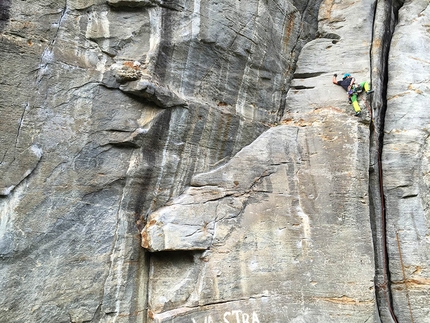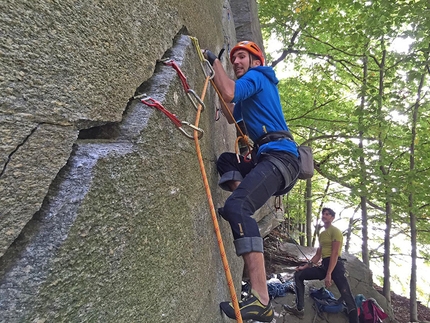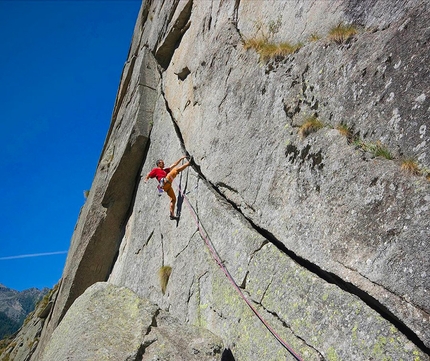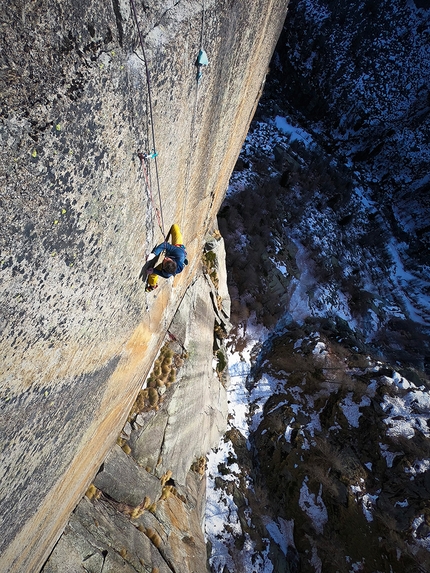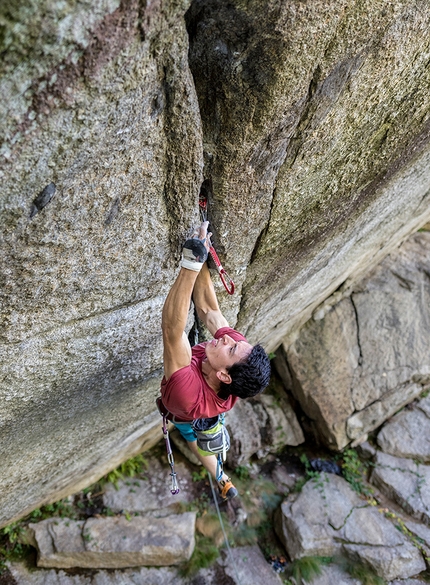Orco Easy Crack, an intro to crack climbing in the Orco Valley
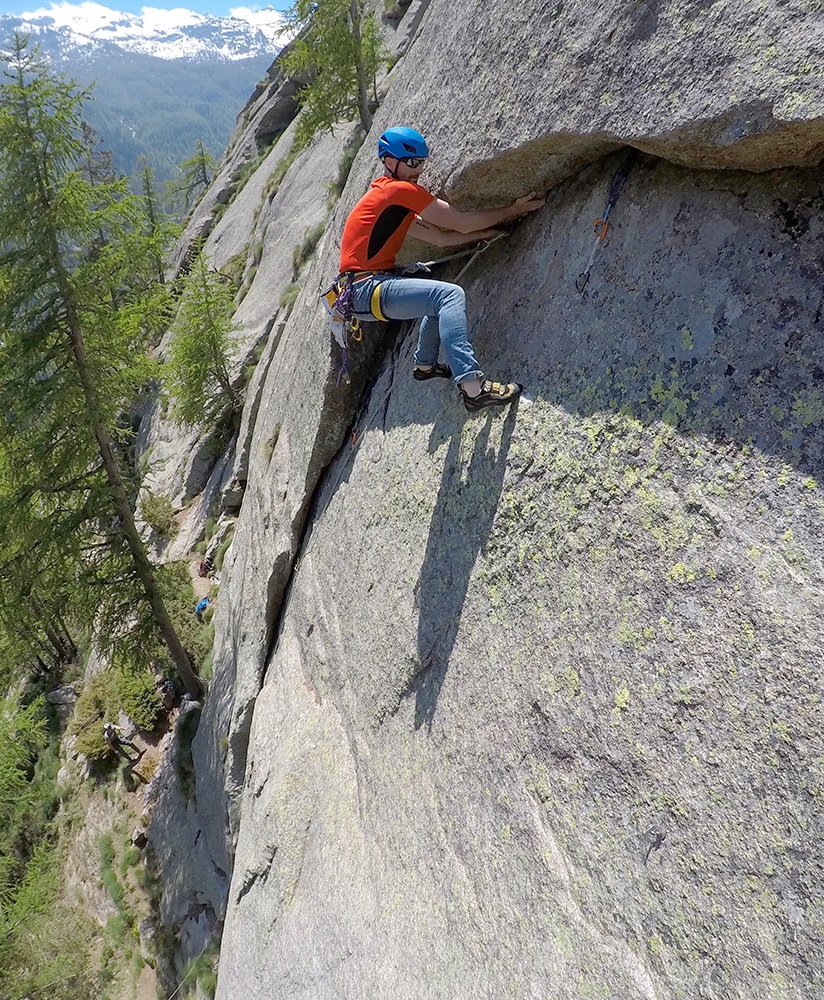
 1 / 8
1 / 8 Maurizio Oviglia
Maurizio Oviglia
A few years ago I wrote two articles about some relatively "easy" crack climbing crags in Northern Italy, namely Cadarese and Balma 1. Given the popularity of these articles, I was asked to do the same for another trad climbing mecca, the Valle dell'Orco.
Since I consider these to some extent my "backyard mountains" (in truth I don't know whether my backyard sits in Piedmont or in Sardinia), it’s quite easy for me to offer some advice to those planning a first rock climbing trip to the legendary Orco Valley. I also recently published a guidebook to the area, my first not as author but as a publisher, written by my friend Paolo Seimandi, in which he describes a selection of more than 100 crack climbs in Valle dell’Orco. As one might imagine, these are mainly single pitch climbs or, at the most, routes two or three pitches long, because we’d realised that many visiting climbers (in particular foreigners) visit Valle Orco and do mainly this type of climbing. I.e. crack climbing on routes that need to be protected with trad gear, ideally single pitch. So why not write a guidebook aimed specifically at catering these needs? This, in short, is what motivated us to produce the guidebook, accompanied by beautiful photographs, called Orco: 100 selected crack climbs and translated into English.
Preamble aside, apart from the local climbers the valley is known by most for the usual three or four cracks situated around the Sergent cliff: Fessura Kosterlitz, Fissure du panetton, Incastromania, Fessura della Disperazione. Many have been amazed therefore to discover that there are more than 100 single pitch crack climbs dotted throughout the valley, some of which are great but not very famous at all. Considering the fact that the Orco Valley is becoming an increasingly popular climbing destination with foreigners, and also with Italian climbers willing to travel a great distance, all of whom are not necessarily familiar with this granite and this particular style of climbing which requires decent trad climbing skills, here are some tips to get you started.
1 - CRACKS ON THE SERGENT PEDESTAL
These are some easy cracks located on the path that leads from the parking lot to the well-known Sergent cliff. They are located no more than 5 minutes from the La Peschiera campsite and are easily recognizable on the blackish wall. The cracks are very short and had been climbed a while ago, but fell into disuse as climbers concentrated on longer, more demanding outings. While editing the guidebook Paolo and I restored the climbs to their former glory with the aim of making them ideal "introductions" to this type of climbing.
The simplest is on the right and is called Viper. It’s an fairly straightforward 4c, easy to protect with cams from #0.75 (green) to #3 (blue). Just to the left lies Mamba, at 5a slightly more difficult; the gear needed is the same as for Viper. Beautiful Piton is located on the arête and the shape understandably resembles a snake. You’ll need to dig in a little deeper here, especially at the start. A series of cams from #1 to #3 (red, yellow, blue) suffices, but bear in the mind that the amount of gear "necessary" depends entirely on how easy of hard this grade is for you. The crack is given 6a, and although it might be slightly easier than others of the same grade in the valley, given it’s friendly setting it serves as an excellent stepping stone to harder outings nearby. Sometimes an ibex comes down to have a look, enjoy, but watch out for snakes in summer. Not those the routes are named after, but the real ones!
2 - SERGENT
As you continue along the path you reach the central sector of Sergent. Here are three "beginner" cracks that shouldn’t be missed. On the left you’ll notice an obvious roof shaped like the number seven. For many years this pitch was nothing more than an starting variation, known as "variante del tetto a sette". Now we’re given it some dignity by calling it Paperoga, which follows the theme of nearby historic single-pitch sport climb Paperinik. On the whole it’s an ideal route to get used to another type of situation you often come across on granite, namely the inverted crack created by a roof. The difficulties are not extreme, but this route is longer than the previous ones, a full 25 meters, and requires a greater psychological effort. A set of cams up to #3 suffices, but remember what I mentioned before: if 5c is already your limit, take more gear! As you continue to the right you reach the famous arched crack Incastromania. This is an absolute classic. It’s a 6a hand jam crack which will feel like a dream come true for those good at hand jamming, or a nightmare for those not used to crack climbing. In order to have adequate pro take a set of cams up to #2, and double the sizes from 0.75 to 2. A word of advice: don't just focus on your hands and the jams, but also the tiny crystals for your feet either side of the crack. It may be true that a real crack climber only uses the crack for both hands and feet, but when there are other holds, it would be stupid not to use them ;-)
The last crack I’d like to recommend at Sergent (there are many others, but they’re all a lot harder) is Mary Poppins. Located a little lower and to the right of the Lost Arrow, this has long been considered a beginner's crack. In the 1980s it was graded V- UIAA, which means it should be a French grade 4. Although I’ve climbed it countless times, over the years I find it gets increasingly difficult, maybe it’s just me getting old! In the new guidebook we graded it 5c+, and in doing so it reminded us of when we went from lire to euro! The problem about Mary Poppins is the size of the hands which, as you will realise if you’re in to crack climbing, is the all-important variable. Mary Poppins is for thin hands, which makes it harder for those with L or XL hands. Conversely, young ladies (or gentlemen) with small hands will find it much easier… The crack happens to be diagonal, which adds another variable: climbing a diagonal crack can often be more difficult than on a vertical one. The crack climbing technique to successfully get up it changes almost completely. The gear you’ll need to climb Mary Poppins is a set of cams up to #3, and a double set of the mid sizes.
3 - PARETE DEL DISERTORE
If you go to Valle dell’Orco in summer it can get extremely hot, despite its altitude and the mountain environment. You may therefore have to wait until the afternoon, when the Sergent cliff finally gets the shade. One alternative may be to climb at Parete del Disertore, located right opposite Sergent and in the shade in the morning. There are many great cracks here (including White Totem, freed by Patrick Edlinger), but the easiest is a finger crack first climbed by myself, called Paris Texas. It’s graded 6b, so it’s not really a climb for beginners, but the crack is thin and if you’re a sport climber, you may find this significantly easier than other easier graded, wider cracks that require specific crack climbing technique. In order to protect yourself properly take a full rack of cams from micro to #2 (yellow). And if you don't trust micro cams, take some good old wires, which are easier to place (and are possibly safer therefore).
4 - DADO
There is a considerable number of beautiful cracks at this popular crag located just above the village. As of late the cliff hosts a mix of bolted sport climbs and a handful of classic cracks left in their pristine state. Apart from the beautiful Cochise and Bianca Parete, which are not exactly easy outings, I recommend you try your luck on Apogeo, a short vertical crack which is less simple than it looks. Over the years, this too has been upgraded, from 5c to 6a. Take a set of cams up to #3, double #2 and #3. If your skin hurts use crack climbing gloves, even if hardcore crack climbers will tell you that the difficulties drop a grade. But don’t listen to them, just like in all walks of life there are climbers who like to show off, the important thing is that you do as you choose! ;-)
Ah, if you want to try something a little different, don’t miss out on the chimney called Mister Green. It’s a four-star 6b or some or an absolute nightmare for others. Once again, it just depends on your point of view!
5 - FESSURA DEL TRAMONTO - SUNSET CRACK
While still on the subject of how to make best use of hot summer mornings, go below the long tunnel that joins Ceresole with Noasca. Cross the stream and reach Fessura del Tramonto, Sunset Crack. It’s a beautiful 30m 5c crack that offers extremely pleasant but never too straightforward climbing. Take a double set of cams and revel in the joy of protecting yourself completely on this long pitch, past all type of jams imaginable, never extreme though. Trad climbing at its best!
PS and the Kosterlitz crack. Can one leave without having tried the famous fessura Kosterlitz? Surely not! Give it a go, because you can’t say you’ve climbed in the Orco Valley without having laid your hands on it! If you climb it without too much trouble then it means this article won’t be all that much use to you, and that you’re ready to face new challenges.
by Maurizio Oviglia
Orco: 100 selected crack climbs by Paolo Seimandi. Maurizio Oviglia Edizioni, 2020
To purchase the guidebook: www.pietradiluna.com/libri-guide-maurizio-oviglia



 Copia link
Copia link

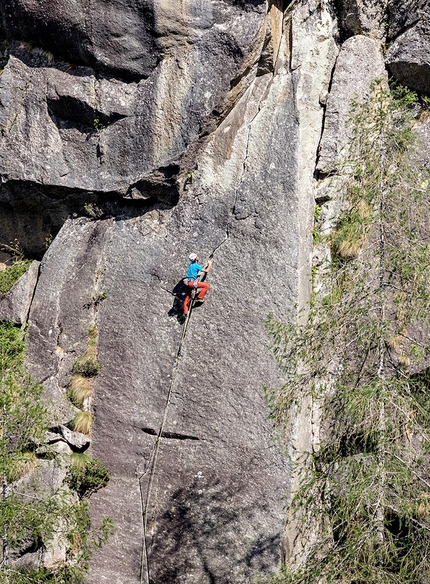
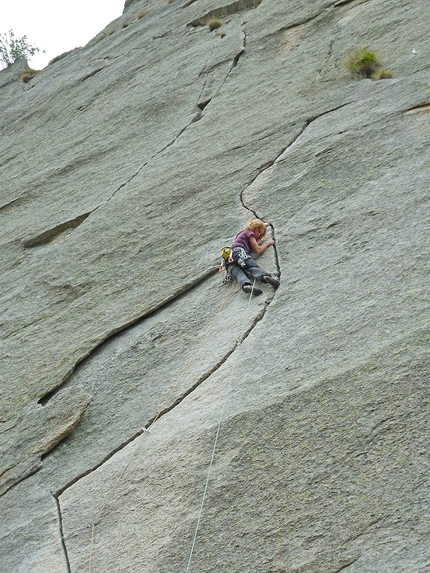
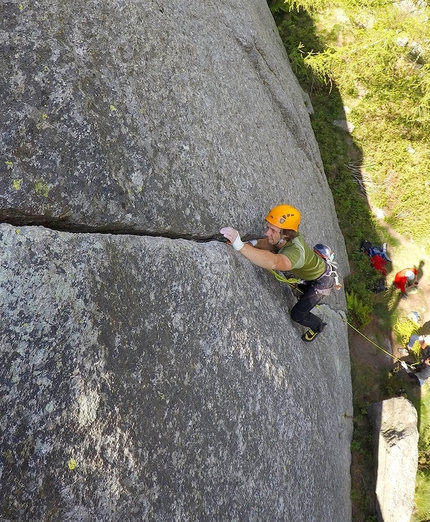
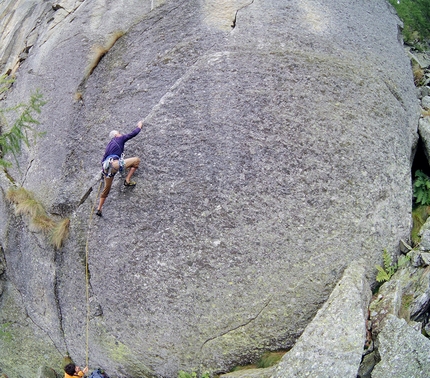
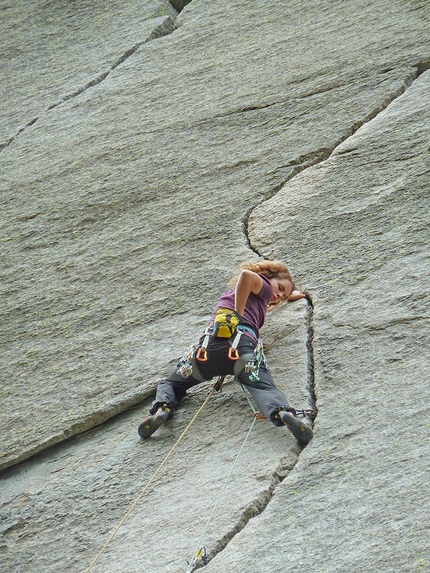
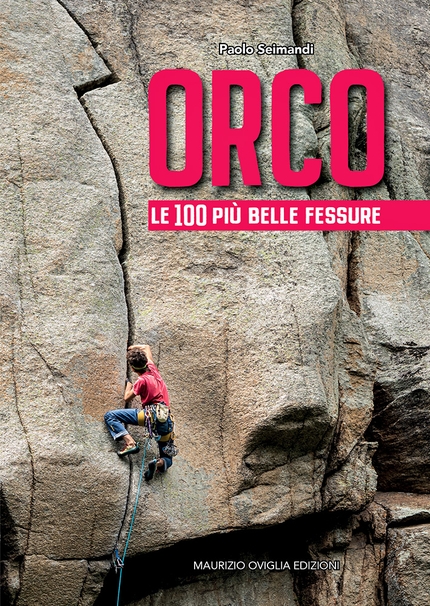
 See all photos
See all photos